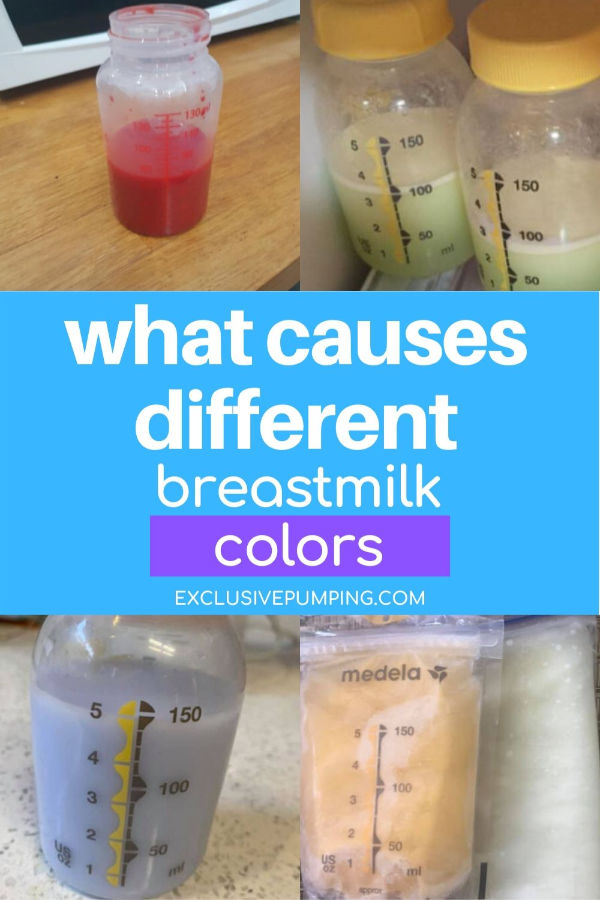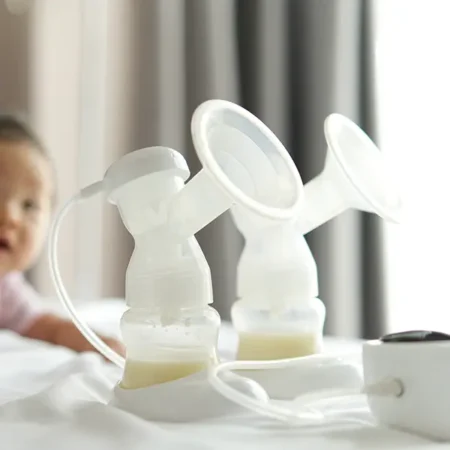Have you pumped red, green, orange, or even purple breast milk? Here’s an explanation of what could cause all these different breast milk colors! Plus, whether it’s safe to feed this milk to your baby.
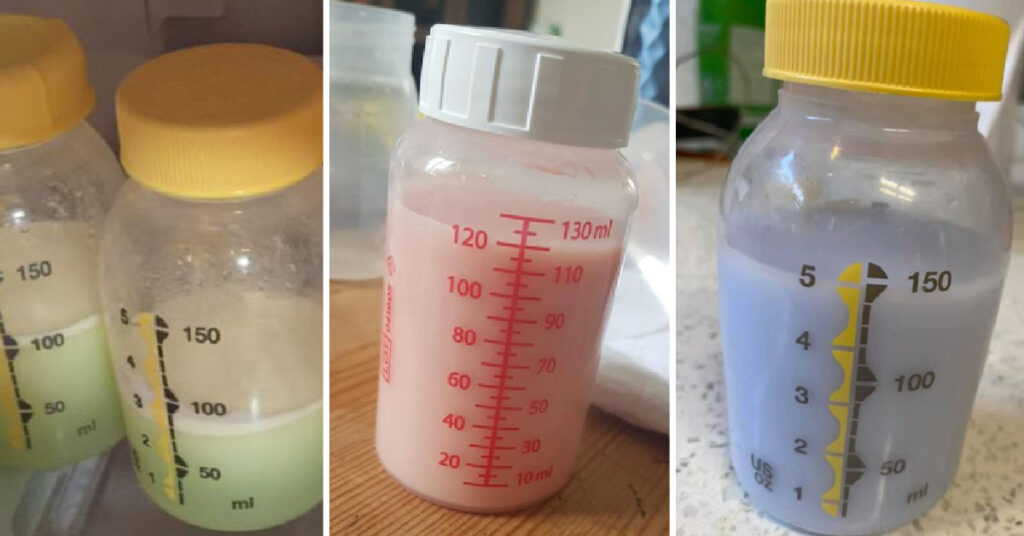
This post may contain affiliate links, which means if you click a link and purchase something, I may make a small commission at no additional cost to you. I only recommend products I love! More information here.
What different colors can breast milk turn?
While breast milk is usually white or light yellow, it’s possible to pump milk that is any color of the rainbow.
Below are photos of different colored breast milk and reasons why the color may change.
Red or Pink breast milk
There are a few different things that can cause red or pink breast milk.
1. Blood
The most common cause of red breast milk is blood flowing into the bottle from a cracked or damaged nipple. This sometimes happens if you have the wrong size breast shields, or if you and your baby are struggling with latch.
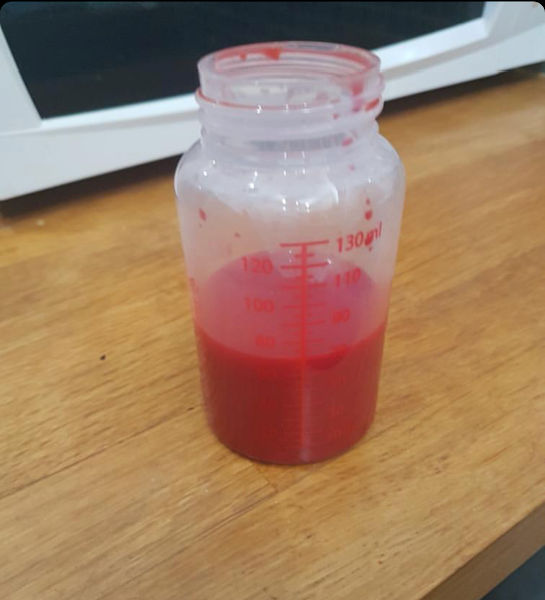
A smaller amount of blood can also turn breast milk pink.
It’s safe to feed breast milk with blood in it to your baby, though it may upset your baby’s stomach a bit.
2. Food dyes
Eating food with red dye can also cause breast milk to turn red or pink.
3. Bacteria
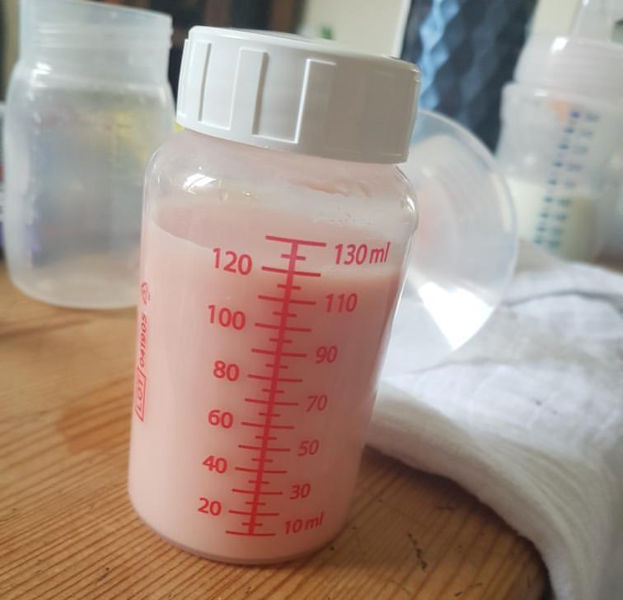
The one concern with red or pink breast milk is that it can also be caused by a bacteria called Serratia marsescens.
If you’re not sure that your red breast milk was caused by blood (for example, if you don’t see any nipple damage or if the color changes hours after you pump it), you should clear the milk with your pediatrician before feeding.
Dark yellow/orange
Early on, in the first week or so postpartum, transitional breast milk tends to be a darker yellow or even orange. Later, breast milk transitions into “mature” milk, which is usually lighter.
The below photo shows transitional early milk compared to milk pumped a few weeks later:
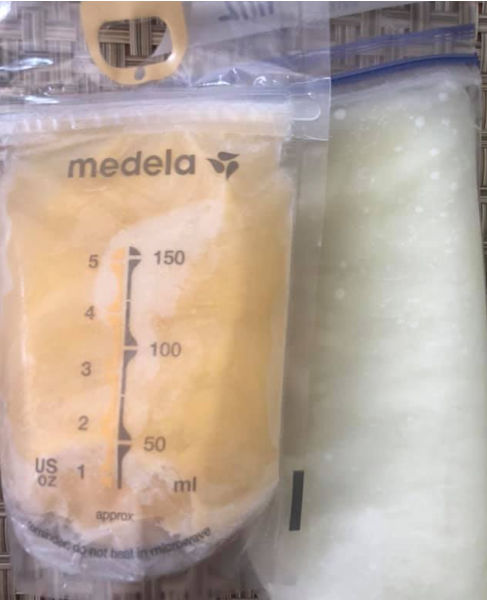
Beta carotene is an orange pigment that’s found in many fresh vegetables and fruits. Eating foods high in beta carotene (such as carrots or sweet potatoes) may also cause orangish breast milk.
Green
The most common thing that causes green breast milk is eating green food. Eating a lot of green vegetables such as kale or spinach, or consuming green food dye can turn your pumped milk green.
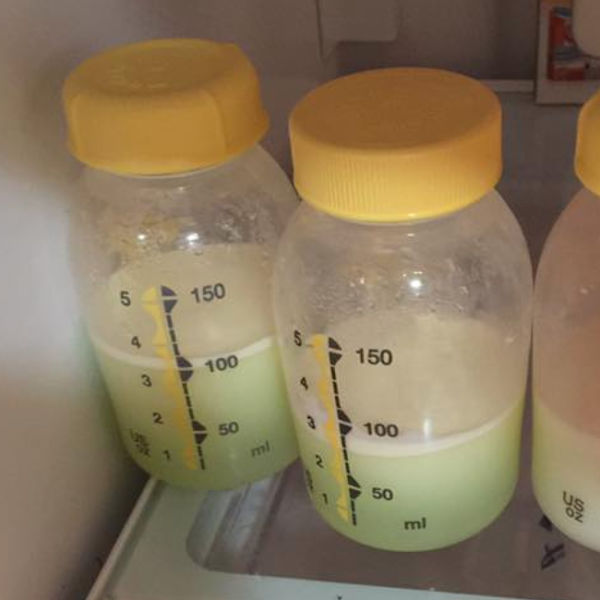
Blue
Blue breast milk can be very common, especially when breast milk separates.
The milk that you pump at the beginning of a pumping session (also called foremilk) tends to be watery and can be bluish in color, while milk pumped later in a session (called hindmilk) gradually tends to get creamier and thicker.
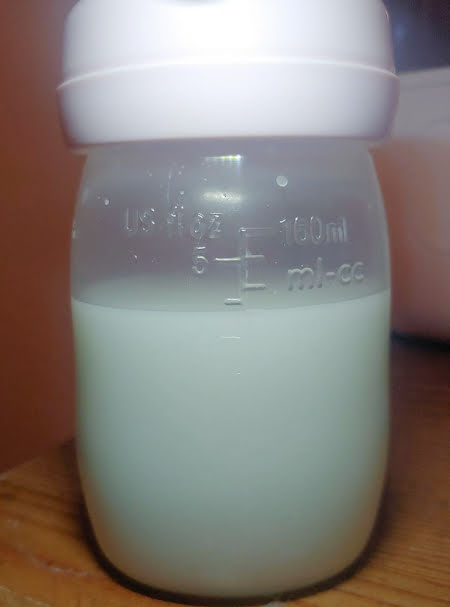
Breast Pump Bags
Purple
A few different things can cause purple breast milk. Eating food dyes or naturally purple foods (like blackberries) can be one cause.
Topical gentian violet used to treat thrush can also turn your breast milk purple.
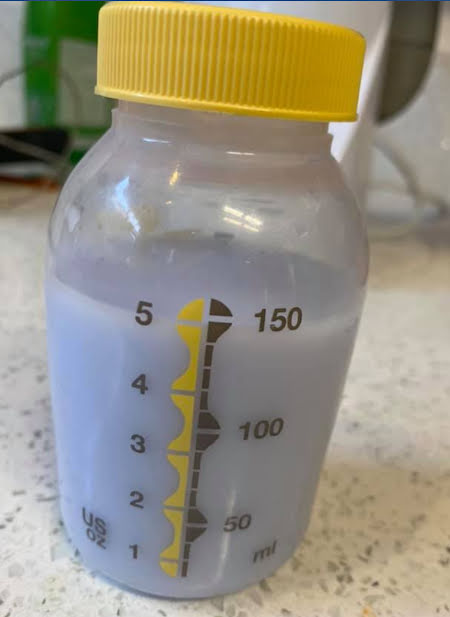
Brown
Brown breast milk may be caused by residual blood in your breasts. (One exclusive pumper in our Facebook group showed the below photo to her doctor, who thought this was the cause and referred to this as “rusty pipes.”)
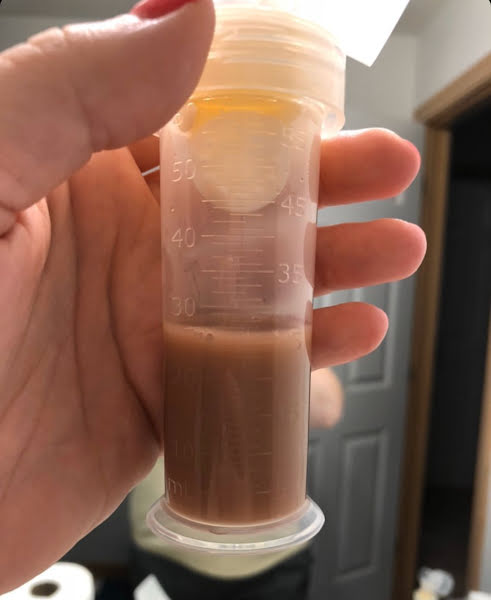
Certain medications might also cause breast milk to turn brown. Check with your doctor or the Infant Risk Center if you’re taking any medications.
Is different colored breast milk safe to give to your baby?
In most cases, with the exception of the breast milk that may turn pink or red as a result of bacteria as mentioned above, different colored breast milk is usually the result of something that you ate, and safe to feed to your baby. However, always talk to your pediatrician with any concerns.
Have you pumped unusual breast milk colors? Tell us about it in the comments!
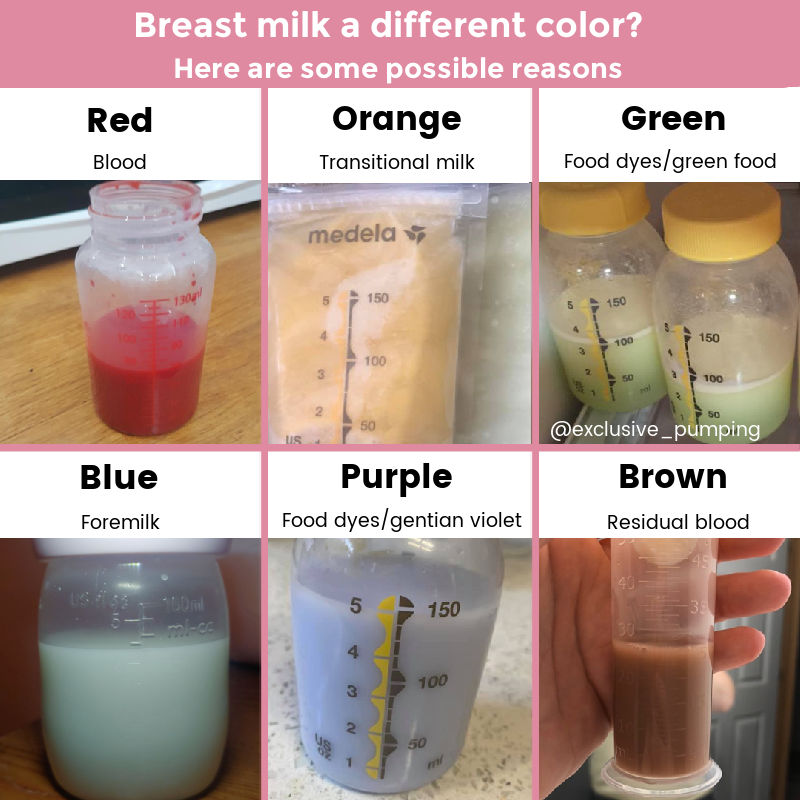
- La Leche League Internation. “Color of Milk.” https://llli.org/breastfeeding-info/color-of-milk/
- Medela. “Things That Affect The Color Of Breast Milk.” https://www.medela.us/breastfeeding/articles/things-that-affect-the-color-of-breast-milk
- Medical News Today. “All you need to know about beta carotene.” https://www.medicalnewstoday.com/articles/252758
